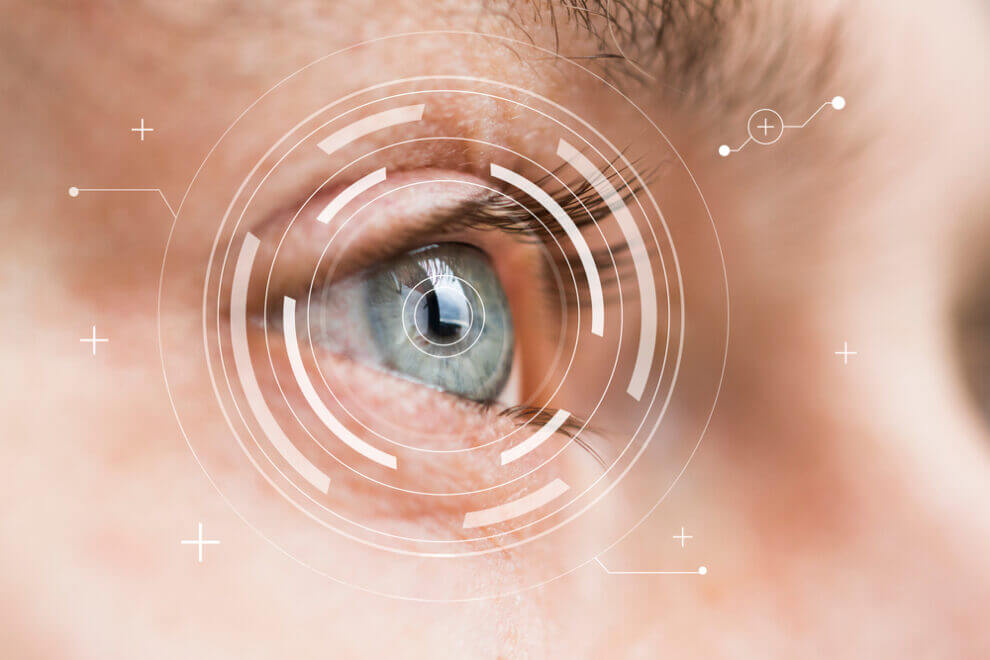Cornea

What is the Cornea?
The cornea is the clear, dome-shaped part of the eye that covers the iris, pupil, and anterior chamber, aiding in light refraction and providing protection. It helps focus light and protects the eye from foreign objects. At Gadsden Eye Associates, our experienced team of eye care professionals specializes in diagnosing and treating various cornea conditions to ensure optimal vision and eye health for our patients.
A healthy cornea is vital for clear, complete, and comfortable vision. This vital structure helps focus light that enters your eye. By bending the light, the cornea helps direct the light to land precisely on the retina. When the light is able to easily pass through the cornea, then bend to land on the retina, you will be able to experience clear vision.
The cornea also has the essential function of keeping debris out of the eye, like dirt, dust, and other particles. In order for it to perform all of these functions smoothly, it must stay lubricated and clear.
What Are Some Common Cornea Conditions?
There are many conditions that can arise within the cornea. Here are some of the most common cornea conditions:
Corneal abrasions are a condition where the outer layer of the cornea is scratched or damaged, often resulting from trauma or foreign objects. It can cause eye pain, redness, and blurred vision.
When there is a break or defect in the surface layer of the cornea, known as the epithelium, and the underlying stroma is damaged, it leads to the formation of a corneal ulcer. These ulcers are typically caused by microorganisms that enter the stroma through the epithelial break.
Timely treatment is crucial for the successful healing of corneal ulcers. Neglecting them can result in corneal clouding and even perforation, which is a hole in the cornea.
These complications can lead to significant vision loss and, potentially, the loss of the affected eye. Due to their serious impact on vision, corneal ulcers demand immediate medical attention.
Keratoconus is a progressive eye condition characterized by thinning and bulging the cornea into a cone-like shape. It often begins during adolescence or early adulthood and can lead to distorted vision, nearsightedness, astigmatism, and increased sensitivity to light.
Corneal dystrophies are a group of genetic eye disorders that cause abnormal changes in the cornea. These changes can affect the clarity and shape of the cornea, leading to vision problems.
Different types of corneal dystrophies exist, each with unique characteristics and patterns of inheritance.
Corneal scarring refers to the formation of scar tissue on the cornea, often resulting from injury, infection, or certain eye conditions. The presence of corneal scarring can impair vision and may require treatments such as corneal transplantation or the use of specialty contact lenses to improve visual acuity.
How Do Eye Doctors Diagnose Cornea Conditions?
Eye doctors diagnose cornea conditions through a comprehensive examination that includes various tests and procedures. These may involve a visual acuity test to assess vision, a slit-lamp examination to evaluate the cornea’s appearance, corneal topography to map its shape, and sometimes additional imaging or biopsies for further evaluation.
Through a variety of diagnostic tests, eye doctors can accurately identify and diagnose cornea conditions, enabling appropriate treatment and management strategies.
Corneal Abrasions
Corneal abrasions are a condition where the outer layer of the cornea is scratched or damaged, often resulting from trauma or foreign objects. It can cause eye pain, redness, and blurred vision.
Corneal Ulcers
When there is a break or defect in the surface layer of the cornea, known as the epithelium, and the underlying stroma is damaged, it leads to the formation of a corneal ulcer. These ulcers are typically caused by microorganisms that enter the stroma through the epithelial break.
Timely treatment is crucial for the successful healing of corneal ulcers. Neglecting them can result in corneal clouding and even perforation, which is a hole in the cornea.
These complications can lead to significant vision loss and, potentially, the loss of the affected eye. Due to their serious impact on vision, corneal ulcers demand immediate medical attention.
Keratoconus
Keratoconus is a progressive eye condition characterized by thinning and bulging the cornea into a cone-like shape. It often begins during adolescence or early adulthood and can lead to distorted vision, nearsightedness, astigmatism, and increased sensitivity to light.
Corneal Dystrophies
Corneal dystrophies are a group of genetic eye disorders that cause abnormal changes in the cornea. These changes can affect the clarity and shape of the cornea, leading to vision problems.
Different types of corneal dystrophies exist, each with unique characteristics and patterns of inheritance.
Corneal Scarring
Corneal scarring refers to the formation of scar tissue on the cornea, often resulting from injury, infection, or certain eye conditions. The presence of corneal scarring can impair vision and may require treatments such as corneal transplantation or the use of specialty contact lenses to improve visual acuity.
